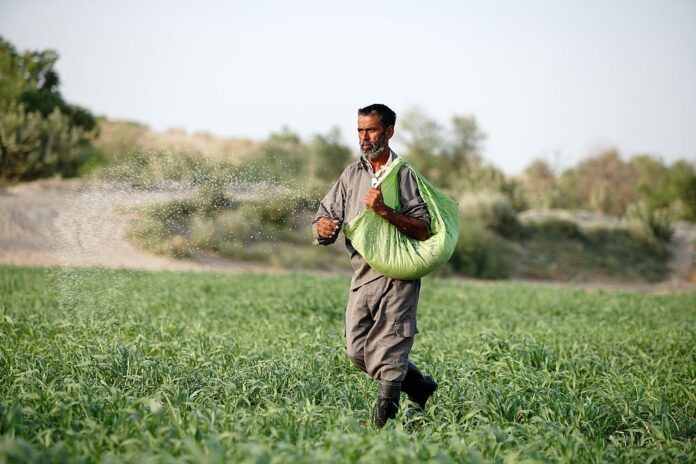A wheat farmer, Ishfaq Jutt residing in the Southern Punjab city of Jahanian, is facing a dire situation. Over the past decade, his income has dropped by 45%, prompting him to consider offers from local real-estate developers to purchase his agricultural land.
Jutt explains his decision, saying, “All the farmers around me are doing the same. I plan to sell the land and use the money to set up a business for my children.” Despite inheriting his 10-acre farmland from his ancestors dating back to pre-partition times, Jutt has no desire for his children to continue the farming legacy.
In Pakistan, small-scale farmers like Jutt are struggling due to persistent inflation driving up costs of pesticides, fertilisers, and machinery, alongside unpredictable weather patterns wreaking havoc on crop yields. According to the Global Climate Risk Index, Pakistan ranks as the fifth most climate-vulnerable country worldwide.
The country’s Economic Survey for the financial year 2022-23, released by the ministry of finance, highlights climatic shocks adversely affecting the agricultural sector. With farmers spending more than they earn, many question the viability of farming altogether.
This sentiment resonates across the farming community in Punjab, where a growing number of farmers are selling their agricultural land to real-estate developers or being compelled to surrender it for state housing projects, resulting in shrinking agricultural land.
Experts warn of the implications of diminishing agricultural land in Punjab, a province crucial to Pakistan’s economy. Major cities in Punjab, including Lahore, Faisalabad, Gujranwala, Multan, and Rawalpindi, have lost tens of thousands of acres of farmland to public and private housing societies, according to findings from The Urban Unit, a government research department.
“In Lahore alone, since 2000 over 35% of agricultural land has been converted to brown areas,” says Samiullah Khan, manager of remote sensing at the Urban Unit.
Mapping conducted by The Urban Unit indicates that a substantial portion of this land in and around Lahore has been swallowed up by three prominent housing societies: the military-run Defence Housing Authority (DHA) and the privately-owned Lake City and Bahria Town.
Today, the DHA Lahore alone stretches to over 300,000 kanals of land and is divided into 12 phases, according to its official website.
A satellite image captured by The Urban Unit also shows the stark transformation. Vast expanse of agricultural land in Lahore in 2003 contrast sharply with images from 2023, revealing conversion of agricultural land into Phase 6 of DHA Lahore.
Besides the prominent housing societies, numerous others are also encroaching upon green areas within the city. Around 380 private housing societies are operational in the Lahore district, while 156 have been established illegally, as per a report published by the government-run Lahore Development Authority (LDA).
“There is barely any agricultural land left in Lahore,” remarks Dr Urooj Saeed, a senior specialist at The Urban Unit, “If you look at the city’s recent maps, only around 10 square kilometers of [green] land is left, which is located near the international border [between India and Pakistan].”
Now, even cultivated land on Lahore’s peripheries is being eyed by the government.
In 2020, the federal government announced plans to construct a new city, known as the Ravi Riverfront City, along the banks of the river Ravi. Envisioned to cover an expansive 900 square kilometers, this new city aims to accommodate over 10 million people.
For comparison, the population of Lahore is 13 million, while it measures a little over 1,700 square kilometers.
“All this land [for the Ravi Riverfront City], more than 90% is prime agricultural land,” an senior government official, privy to the developments said, “Here wheat, rice and vegetables were grown for Lahore. Now, Lahore will have to get its vegetables from further away and that means higher food costs.”
To acquire land for the project, state officials have been employing a 1894 law, called the Land Acquisition Act, forcibly evicting farmers and residents from their homes. Some farmers have challenged these actions in court.
Multan, another significant urban center in Punjab, shares a similar plight.
From 1995 to 2022, the city has lost 94.5 square kilometers of cropland, nearly ten times the city of Chichawatni in the Sahiwal district of Punjab.
Known for cultivating major crops such as wheat, cotton, sugarcane, as well as mangoes and potatoes, Multan saw a significant number of mango orchards cleared for the construction of a DHA in late 2013.
“The DHA [in Multan] measures around 35 sq km and is the largest DHA in Punjab,” explained Samiullah Khan, who has mapped the area, “In fact, the Multan DHA is bigger than some of the smaller cities in Punjab.”
And this threat to agricultural land isn’t confined to larger cities alone, explains Fizza Sajjad, an urban planner in Lahore.
“We are seeing signs of transformations in smaller cities as well where [real-estate] developers are buying land and converting them into land schemes,” she said over the phone.
But Sajjad adds that there is no complete data as of now to determine how much arable land has Punjab permanently lost to urban development in the last decade or so. For that, she explains, the state will need to conduct a deeper and extensive analysis.






















